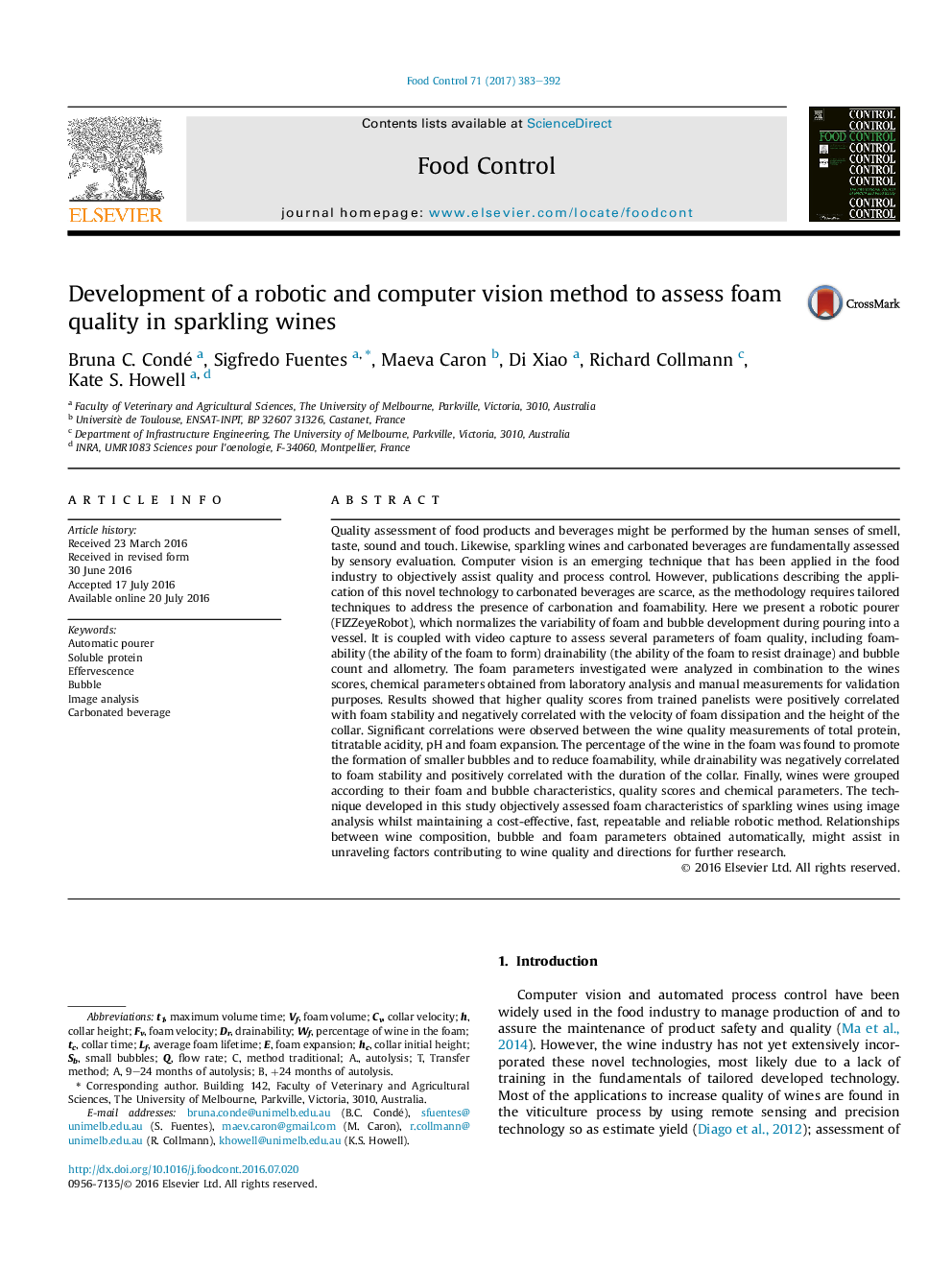| کد مقاله | کد نشریه | سال انتشار | مقاله انگلیسی | نسخه تمام متن |
|---|---|---|---|---|
| 6389991 | 1628391 | 2017 | 10 صفحه PDF | دانلود رایگان |
- Development of a computer vision method to assist sparkling wine foam assessment.
- Foam parameters were obtained automatically and correlated with wine quality scores.
- Bubble and foam parameters were correlated with measured chemical parameters.
- The methodology might be used as objective measures of sparkling wine quality.
- The technique might be applied to other sparkling beverages.
Quality assessment of food products and beverages might be performed by the human senses of smell, taste, sound and touch. Likewise, sparkling wines and carbonated beverages are fundamentally assessed by sensory evaluation. Computer vision is an emerging technique that has been applied in the food industry to objectively assist quality and process control. However, publications describing the application of this novel technology to carbonated beverages are scarce, as the methodology requires tailored techniques to address the presence of carbonation and foamability. Here we present a robotic pourer (FIZZeyeRobot), which normalizes the variability of foam and bubble development during pouring into a vessel. It is coupled with video capture to assess several parameters of foam quality, including foamability (the ability of the foam to form) drainability (the ability of the foam to resist drainage) and bubble count and allometry. The foam parameters investigated were analyzed in combination to the wines scores, chemical parameters obtained from laboratory analysis and manual measurements for validation purposes. Results showed that higher quality scores from trained panelists were positively correlated with foam stability and negatively correlated with the velocity of foam dissipation and the height of the collar. Significant correlations were observed between the wine quality measurements of total protein, titratable acidity, pH and foam expansion. The percentage of the wine in the foam was found to promote the formation of smaller bubbles and to reduce foamability, while drainability was negatively correlated to foam stability and positively correlated with the duration of the collar. Finally, wines were grouped according to their foam and bubble characteristics, quality scores and chemical parameters. The technique developed in this study objectively assessed foam characteristics of sparkling wines using image analysis whilst maintaining a cost-effective, fast, repeatable and reliable robotic method. Relationships between wine composition, bubble and foam parameters obtained automatically, might assist in unraveling factors contributing to wine quality and directions for further research.
Journal: Food Control - Volume 71, January 2017, Pages 383-392
